
The Thinker
Auguste Rodin
-

Auguste Rodin
-
The Thinker (French: Le Penseur) is a bronze sculpture by Auguste Rodin, usually placed on a stone pedestal. The work shows a nude male figure of over life-size sitting on a rock with his chin resting on one hand as though deep in thought, often used as an image to represent philosophy. There are about 28 full-sized castings, in which the figure is about 186 cm high, though not all were made during Rodin's lifetime and under his supervision. There are various other versions, as well, several in plaster, and studies and posthumous castings exist in a range of sizes. Rodin first conceived the figure as part of his work The Gates of Hell commissioned in 1880, but the first of the familiar monumental bronze castings did not appear until 1904.
The Thinker was initially named The Poet (French: Le Poète), and was part of a large commission begun in 1880 for a doorway surround called The Gates of Hell. Rodin based this on The Divine Comedy of Dante Alighieri, and most of the figures in the work represented the main characters in the poem with The Thinker at the center of the composition over the doorway and somewhat larger than most of the other figures. Some critics believe that it was originally intended to depict Dante at the gates of Hell, pondering his great poem. Other critics reject that theory, pointing out that the figure is naked while Dante is fully clothed throughout his poem, and that the sculpture's physique does not correspond to Dante's effete figure. The sculpture is nude, as Rodin wanted a heroic figure in the tradition of Michelangelo, to represent intellect as well as poetry.
This detail from the Gates of Hell was first named The Thinker by foundry workers, who noted its similarity to Michelangelo's statue of Lorenzo de Medici called Il Penseroso (The Thinker), and Rodin decided to treat the figure as an independent work at a larger size. Enlarged in 1904, its colossal version proved even more popular: this image of a man lost in thought, but whose powerful body suggests a great capacity for action, has became one of the most celebrated sculptures ever known. Numerous casts exist worldwide, including the one now in the gardens of the Musée Rodin, a gift to the City of Paris installed outside the Panthéon in 1906, and another in the gardens of Rodin’s house in Meudon, on the tomb of the sculptor and his wife.
The figure was designed to be seen from below and is normally displayed on a fairly high plinth, although the heights vary considerably chosen by the various owners.

Since Rodin's death in 1917, the Monumental version has been cast 50+ times and can be seen across Asia, Europe and the Americas
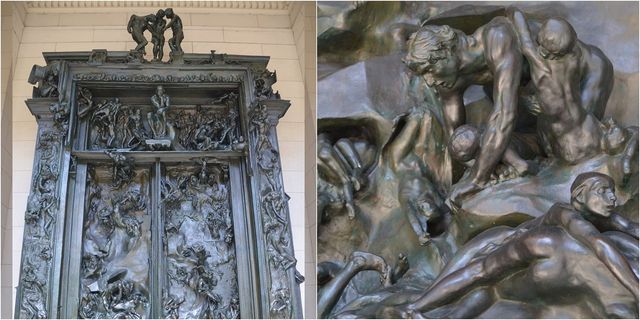
In 1880 Rodin is commissioned to create the Gates of Hell, a work that is eventually cancelled and only cast after Rodin dies
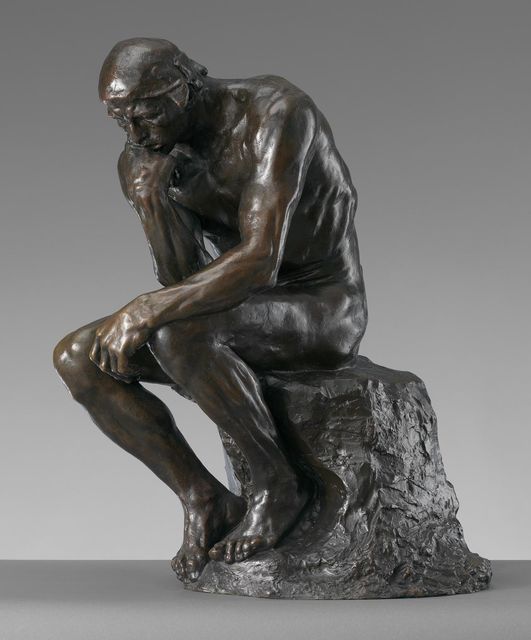
After the Gates of Hell was cancelled, Rodin reworked figure into a small standalone "The Thinker' statue in 1888
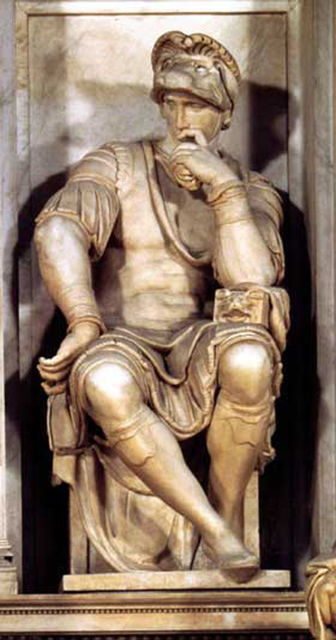
Michelangelo's "Thinker" sculpture of Lorenzo Medici is seen as a possible inspiration to Rodin for "The Poet"
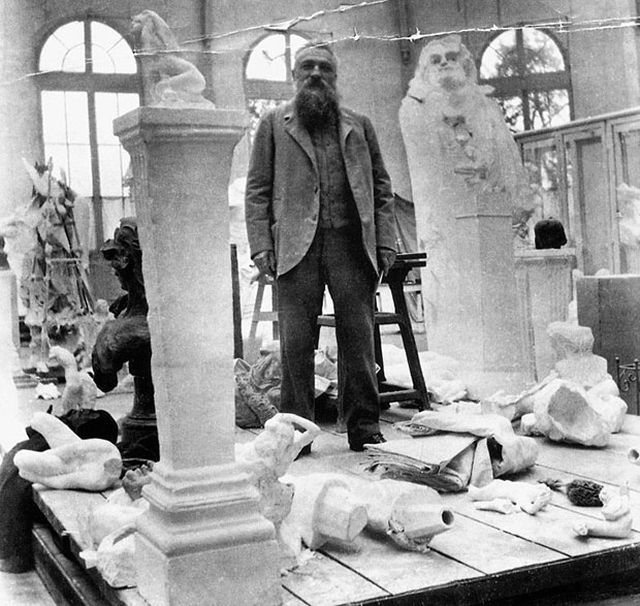
Between 1888 and 1900 Rodin focuses on a sculpture of Poet Balzac, which is rejected, and only cast after Rodin dies
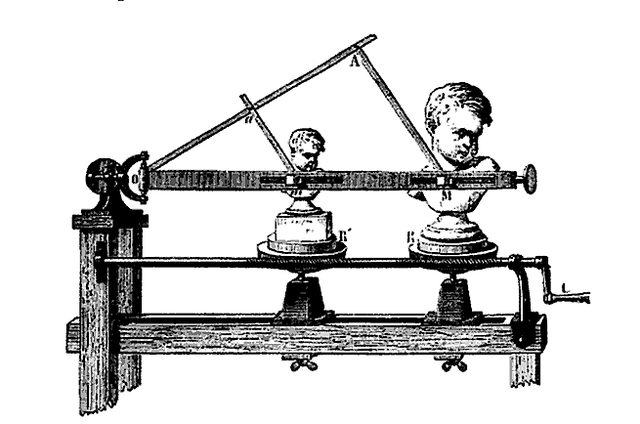
In 1900, after a 10-year pause, Rodin returns to The Thinker, using a Collas Machine enlarge it a larger (Balzac sized) statue
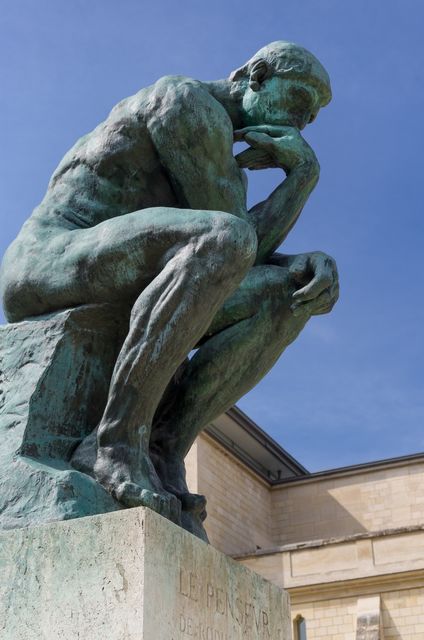
The larger version of The Thinker is exhibited in 1904 at the Salon and purchased by the French Government.
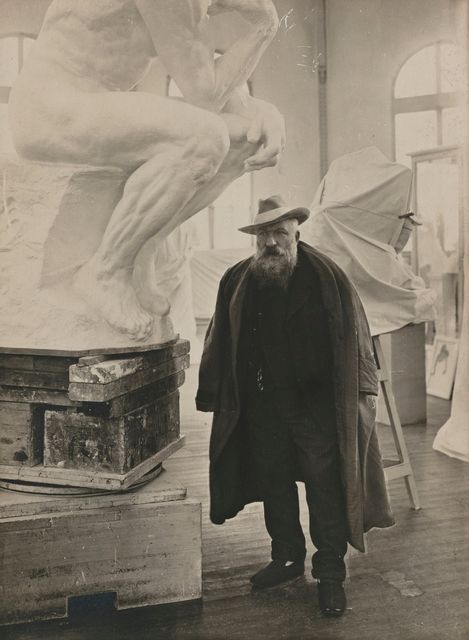
Rodin created a further 9 casts of the thinker during his lifetime - and left the rights to cast this statue to France
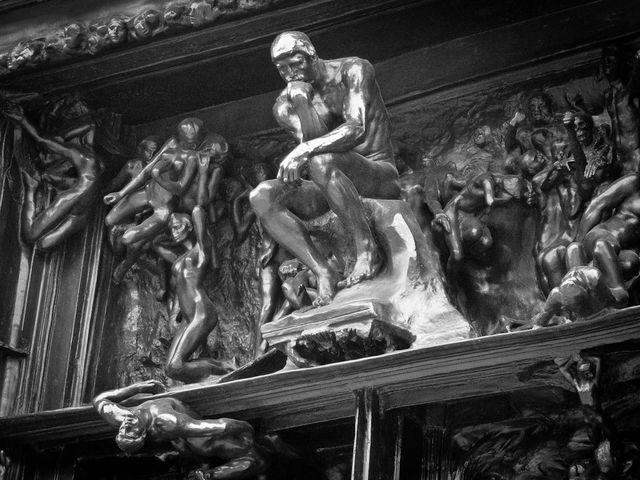
Rodin put Dante,"The Poet" at the centre of the Gates of Hell, embodying every artist, looking over his creation.